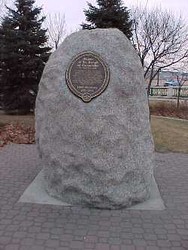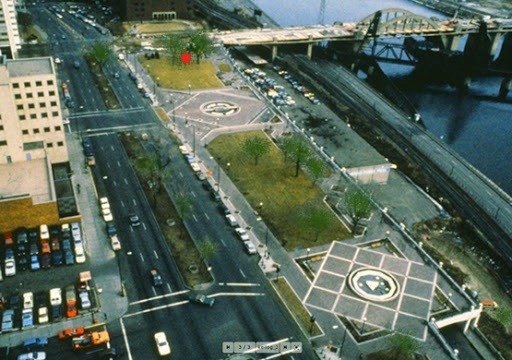Welcome to Kellogg Mall Park
Introduction
Text-to-speech Audio
Images
Father Lucian Galtier Monument

Start Here

Backstory and Context
Text-to-speech Audio
If you had been here in the 1840s, what would you have seen and heard from here?
- Dozens of small streams, one large enough to create a rapids just a half mile to the north, burbling through hardwood forest, pine stands and dense shortgrass prairie.
- The occasional deafening screech of the wooden-wheeled oxcarts driven by Dakota, Metis (see link), Ho Chunk, and European traders hauling furs from Canada to the river via the road (now Kellogg Boulevard) established over centuries by generations of Dakota people.
And down below?
- A tiny community of Irish, French-Canadian, and African American colonists, and Metis families living near the river in a gathering of wooden shacks, log cabins, and tipis, and speaking with each other in their common language, French.
- A slow and intermittent parade of Dakota people traveling to trade with and visit relatives by canoe and American and European visitors arriving by raft or flatboat.
Over the next decade, the trickle of American and European commerce and colonization would become a flood fueled by treaties, forcible removal of indigenous people, land speculation, and the natural boat dock known as the Lower Landing. That boat landing is where Lowertown’s story begins.
Sources
Wingerd, Mary Lethert. North Country: The Making of Minnesota. Minneapolis, MN. University of Minnesota Press, 2010.
The WPA Guide to Minnesota: The Federal Writers' Project Guide to 1930s Minnesota. St. Paul, MN. Minnesota Historical Society Press, 2002.
National Park Service
Minnesota Historical Society
